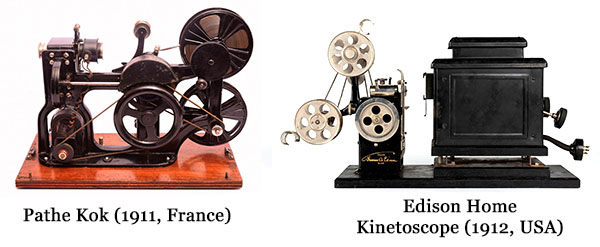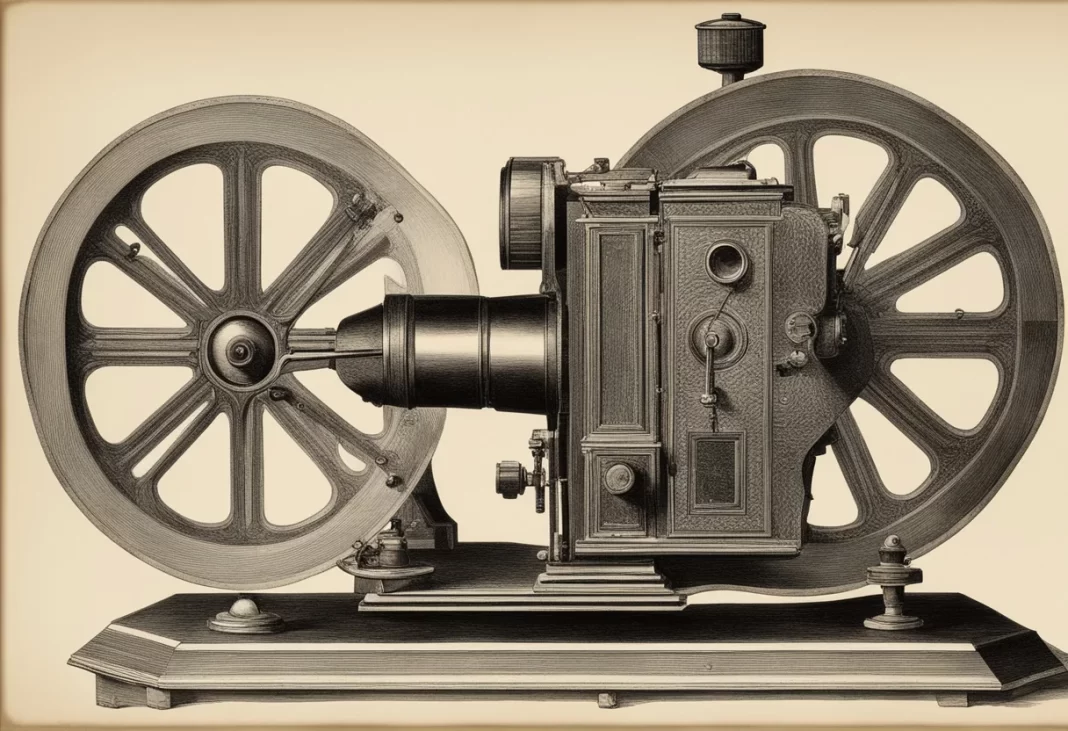The evolution of projectors is a fascinating journey that reflects advancements in technology and changes in visual storytelling, from the early days of magic lanterns to today’s sophisticated digital projectors. Here’s a step-by-step exploration of key innovations in projector technology. Projector Innovation Step by Step 1st to Latest
1. Magic Lantern (17th Century)
The journey of projection began in the 17th century with the invention of the magic lantern, attributed to Dutch scientist Christiaan Huygens around 1650. This early projector used a simple light source, often a candle or oil lamp, to shine light through a glass slide painted with images. The magic lantern was primarily used for entertainment and educational purposes, captivating audiences with images and stories, paving the way for future projection technology.

2. Lantern Slides and Phantasmagoria (19th Century)
By the early 19th century, magic lanterns evolved to include more sophisticated techniques, such as lantern slides. These were glass plates with images, allowing for clearer and more detailed projections. The phantasmagoria, a form of horror theater using projected images, became popular in the late 18th century, showcasing the potential of projected images in storytelling and entertainment, setting the stage for cinematic experiences.
3. Kinetoscope and Early Film Projectors (1890s)
Thomas Edison introduced the Kinetoscope in 1891, a device for viewing moving pictures through a peephole. Although it was not a projector in the traditional sense, it marked the beginning of motion pictures. Around the same time, the Lumière brothers developed the Cinématographe in 1895, which combined a camera, projector, and film developer. The Cinématographe was the first true film projector, allowing films to be shown to large audiences, revolutionizing entertainment.
4. Silent Film Projectors (1900s-1920s)
As the film industry grew, so did the demand for better projectors. Early silent film projectors were developed to accommodate longer films and improve image quality. Innovations in film stock and projection mechanisms allowed for smoother operation and clearer images. By the 1920s, film projectors had become standard in theaters, offering a shared viewing experience that became a cornerstone of entertainment culture.
5. Sound Film Projectors (1927)
The introduction of sound in films with “The Jazz Singer” in 1927 created a new era in cinema, necessitating advancements in projector technology. Projectors were adapted to synchronize audio and visual elements, leading to the development of sound film projectors. This innovation transformed the movie-watching experience, combining dialogue and music with visuals, engaging audiences in unprecedented ways.
6. Overhead Projectors (1950s)
The 1950s saw the rise of overhead projectors, which used transparent sheets (transparencies) to display information. These projectors became popular in educational settings, allowing teachers to present materials interactively. They were simple to use and could display handwritten notes or printed materials, enhancing classroom engagement and communication.
7. Slide Projectors (1960s-1980s)
Slide projectors gained popularity in the 1960s as a means to present photographic slides. They allowed users to project still images onto a screen, making them popular for presentations, lectures, and family gatherings. The 35mm slide projector became the standard for amateur photographers, providing a platform for showcasing personal images.
8. Film Projectors (1970s-1990s)
Film projectors continued to evolve throughout the late 20th century, with advancements in technology improving image quality and sound. 16mm and 35mm projectors became commonplace in schools and cinemas, offering a wide array of films for educational and entertainment purposes. The development of portable film projectors also made it easier to share films in various settings, from classrooms to community events.
9. Video Projectors (1980s)
The 1980s marked the introduction of video projectors, which used CRT (cathode-ray tube) technology to display video images. These projectors were primarily used in professional settings, such as corporate presentations and educational institutions. Video projectors provided greater versatility, allowing users to project content from various sources, including VCRs and computers.
10. LCD and DLP Projectors (1990s-2000s)
The 1990s brought significant advancements in projector technology with the development of LCD (liquid crystal display) and DLP (digital light processing) projectors. LCD projectors offered bright, vibrant images and became widely used in both educational and corporate settings. DLP projectors, utilizing micro mirrors to create images, provided high contrast and better color accuracy, making them popular for home theaters.
11. High-Definition Projectors (2000s)
As technology progressed, high-definition (HD) projectors emerged in the 2000s, providing enhanced resolution and image clarity. With the growing popularity of HD content, these projectors became essential for home theaters, enabling viewers to enjoy films and shows with superior picture quality. The transition from standard definition to HD revolutionized the way people experienced cinema at home.
12. 4K and Ultra HD Projectors (2010s)
In the 2010s, 4K projectors entered the market, offering four times the resolution of 1080p HD projectors. This advancement allowed for incredibly detailed images, enhancing the viewing experience for movies and presentations. As 4K content became more widely available, these projectors gained popularity among home theater enthusiasts and professionals seeking the highest image quality.
13. Laser Projectors (2010s-Present)
Laser projectors emerged as a significant advancement in projection technology. Utilizing laser light sources instead of traditional lamps, these projectors offered greater brightness, color accuracy, and longer lifespans. They became popular in large venues, cinemas, and corporate settings, providing stunning visuals and reducing maintenance costs associated with traditional lamp-based projectors.
14. Smart Projectors (2010s-Present)
Smart projectors, equipped with integrated streaming capabilities and operating systems, have gained traction in recent years. These projectors allow users to access content directly from the internet, eliminating the need for external devices. Many smart projectors feature wireless connectivity, enabling seamless streaming from smartphones and tablets, making them versatile tools for both entertainment and presentations.
15. The Future of Projection Technology
Looking ahead, the future of projection technology promises continued innovation. Advancements in augmented reality (AR) and virtual reality (VR) may lead to new forms of immersive projection experiences. Additionally, improvements in compact, portable projectors will likely enhance accessibility, allowing users to project images and videos anywhere, anytime. As projection technology continues to evolve, it will undoubtedly play a crucial role in entertainment, education, and communication.
Conclusion
From the magic lantern to today’s smart projectors, the evolution of projection technology has transformed how we share and experience visual content. Each innovation has built upon the last, responding to changing needs and technological advancements. As we look to the future, the potential for projection technology remains vast, promising exciting developments in how we engage with visual media.






